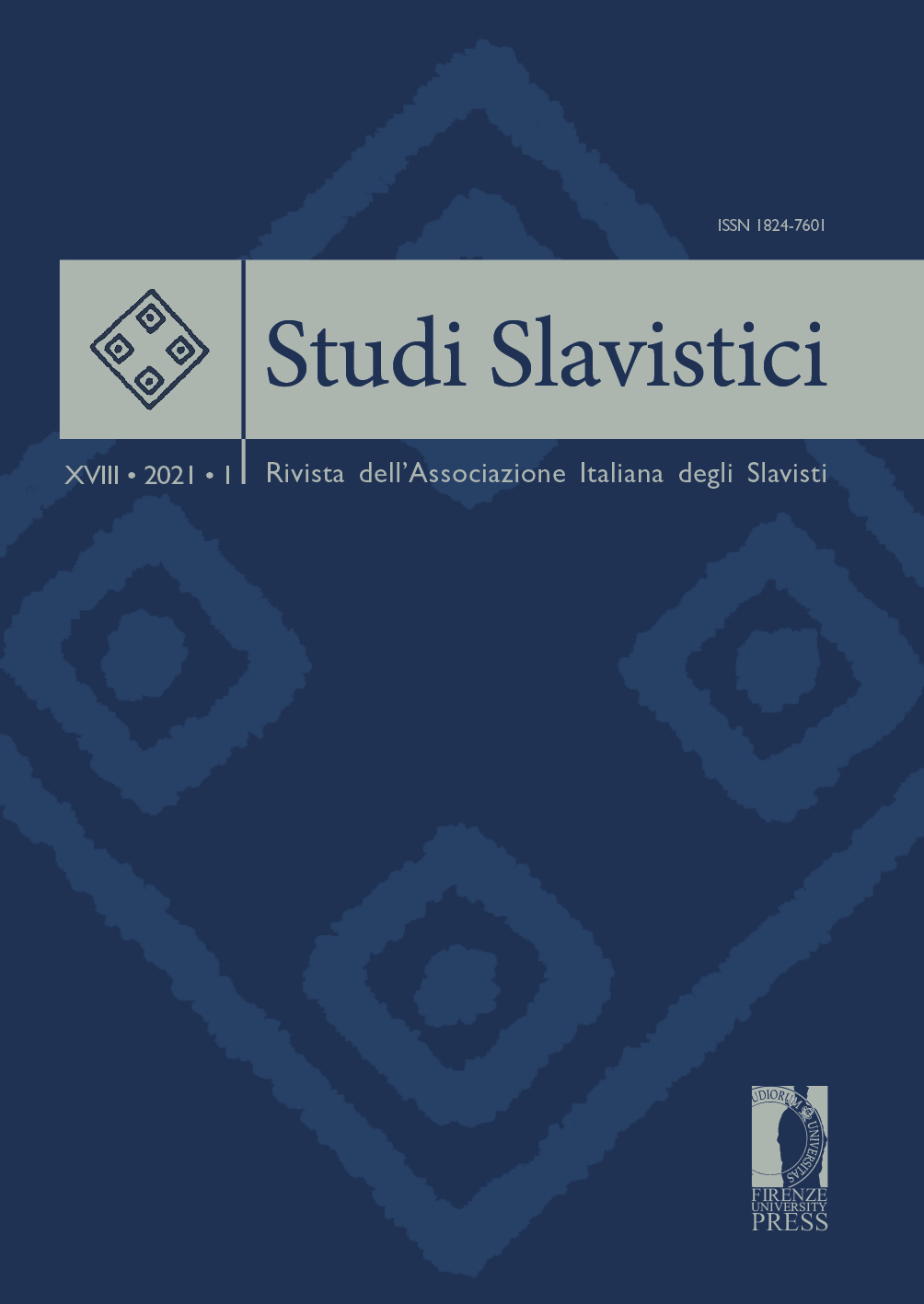How to Overcome the Crisis of Symbolism with the Help of ‘Populist Ideas’? V.F. Chodasevič’s Critical Essays of the Early 1910s and the Article Nadson
Published 2021-07-20
Keywords
- Chodasevič,
- Nadson,
- Critics of Aestheticism,
- Crisis of the Symbolism,
- Blok
- Conceptual History,
- Graždanstvennost’ ...More
Abstract
This paper analyses V.F. Chodasevič’s early 1910s critical essays and his article Nadson, read in 1912 in the Literary and Artistic Club. Although the article did not play an important role in the critic’s work, because it was only during the exile period that Chodasevič criticized Nadson’s poetry, yet it represents the first example of Chodasevič’s appeal to the aesthetic model proposed by the utilitarian critics and the ideas of patriotism and civic virtues (graždanstvennost’), which were important in his poetry and later critic works. Chodasevič delivered a speech at the Club’s anniversary meeting which conveys his views on how to possibly overcome the crisis of symbolism. According to the poet, literature should restore and fully embody the ideals of the early Aesthetic Movement. The aim of the present research is to analyse the concepts, aesthetic ideas, and quotations used by Chodasevič in Nadson, and ascertain which sources influenced the author and how they relate to the literary context of the time (early 1910s). I argue that Chodasevič’s text echoes, to some extent, symbolist aesthetics while also reflecting elements of radical critique of early Aestheticism. Chodasevič only reproduces politically radical intentions that were present in the texts written by symbolists after 1907. Chodasevič’s article and his social views correspond to the evolution of Blok’s thought during the so-called ‘synthesis’ period; he, in fact, employs Blok’s ideas and introduces indirect quotations from his essays. Chodasevič’s speech at the Literary and Artistic Club was received as advancing principles which were seen too eclectic and old-fashioned, and which, most importantly, did not fit into the established literary context. Notwithstanding Chodasevič’s strategy of turning to Belinskij’s and Pisarev’s literary views was unsuccessful, since his intentions were misunderstood by the audience, he followed a similar pattern in several essays from the early 1910s. Chodasevič used symbolist aesthetic ideas in a number of texts written at the end of the exile period, where it can be seen that his approach and social and political views changed.


